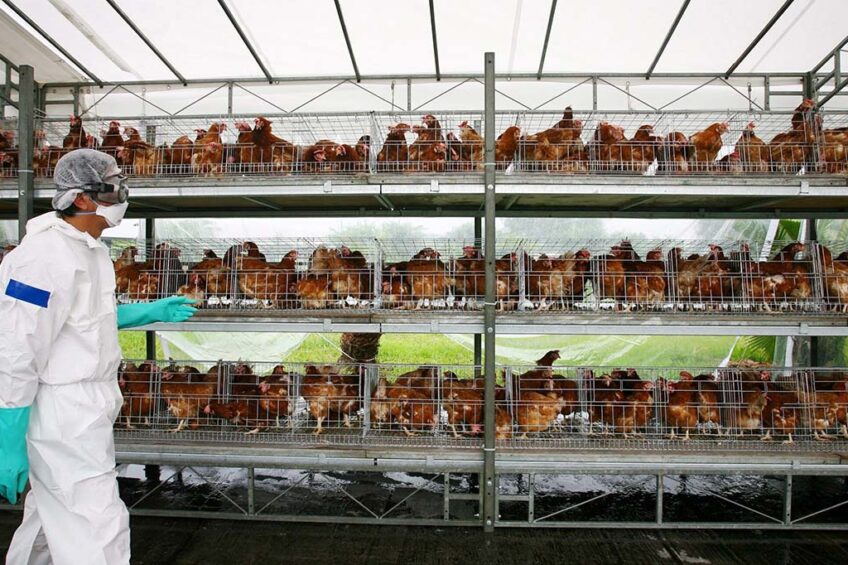Rapid, highly-accurate on-farm HPAI testing coming

Highly-pathogenic avian influenza seems here to stay for the foreseeable future and although the disease has caused enormous bird suffering and exhausted the economic and labour resources of both poultry producers and governments, there is good news. Vaccines for this disease are being developed and rapid on-farm testing is about to become available.
Highly-accurate molecular tests can help farmers, veterinarians, government personnel and others to make better-informed decisions about disease containment, preparation for future outbreaks, better allocation of resources and more.
As explained in Poultry World in late 2023, there are 2 current highly-pathogenic avian influenza testing options, PCR and antigen (also called lateral flow) tests. PCR is known for its accuracy but requires sending samples to nationally-approved laboratories which can range in number in any given country. It can take days for PCR test results to be made available. Antigen tests can be performed on farms but are significantly less sensitive than molecular-based approaches such as PCR, and can require a second test 24-48 hours later to confirm results (or otherwise). In the case of a disease like highly-pathogenic avian influenza, that delay enables the further spread of the virus rather than the opposite.
Dr Richard Currie, president of x-OvO, notes: “Suspect farms that are tested are often under lockdown for 7 days or more awaiting virus isolation tests. If these tests are negative and no action is taken, farmers bear the costs associated with the shutdown in terms of movement restrictions and the resultant business impact. With a test that generates results within an hour and reports them to the government, that waste is eliminated.”
Test details
The test Currie is referring to is a LAMP (loop‐mediated isothermal amplification) test called Flockscreen, developed by Alveo Technologies, Royal GD and X-OvO (with development and distribution involving Pharmsure International). As mentioned, results are provided rapidly with on-farm tests using handheld units – results which the companies say are as accurate as those of molecular PCR tests. This testing platform is also very durable (electrical modes of detection) compared to other LAMP-based tests.
The major challenges in the development of this platform were two-fold, explains Currie. One challenge was assay designs for such variable virus targets. “A vast number of trials and refinements were necessary, and this sits at the core of the collaboration,” Currie says. “The second challenge is understanding how to custom manage assay ‘big data’ to construct industry-specific management solutions which meet government requirements to control notifiable disease testing.”
So positive tests from the use of this technology are timestamped, geo-located and uploaded to the cloud. This enables public officials to accurately track the spread of highly-pathogenic avian influenza in real time, create databases to better understand the behaviour of the virus and more.
As a result, officials, vets and farmers will be better prepared to take swift action to stem the spread and create an informed strategy to combat the disease on a large scale. Currie explains that geolocation of testing and heat mapping are used in a surveillance strategy focused on migratory wild bird pathways.
“Constantly updating heat maps of outbreaks can predict risk to commercial poultry and focus vaccination programmes more cost effectively,” he says. “These product features will be launched alongside the product itself with field trials running in key European markets ahead of commercial launch. We are in the process of engaging with government agencies to optimise data portal access to their requirements.”
Rollout coming soon
Currie reports that the initial countries of focus for early sales of the Flockscreen LAMP AI assay will be those that undertake significant wild bird surveillance, with the highest levels of avian influenza challenge to commercial poultry. He and his team are very excited to be rolling out their technology very soon, with financial pressures on the agricultural sector (both for producers and government agencies) at “historic highs”.
“The Flockscreen LAMP AI assay combined with the Alveo ‘be.well’ platform facilitates the decentralisation of notifiable disease testing, removing the government cost requirement for central testing capacity building,” says Currie.
Other systems
Using small RAIN RFID technology, a system called Impinj allows producers to swiftly identify and isolate sick animals. Farm Health Guardian is a real-time disease symptom and outbreak mapping system (along with other capabilities) that is rolling out across Europe and North America.
HPAI updates
The US Department of Agriculture’s Animal and Plant Health Inspection Service recently released an update on the number of birds affected by highly pathogenic avian influenza. In December 2023 it had reached 68 million birds. This includes (over the past few months) an egg operation of 82,500 birds in California, a turkey farm of 33,000 birds in Ohio, another poultry operation in Wisconsin of almost 115,000 and numerous backyard flocks in several states. In Canada, by 6 February 2024, there had been 33 outbreaks this year across 6 provinces on both commercial farms and in backyard flocks.












